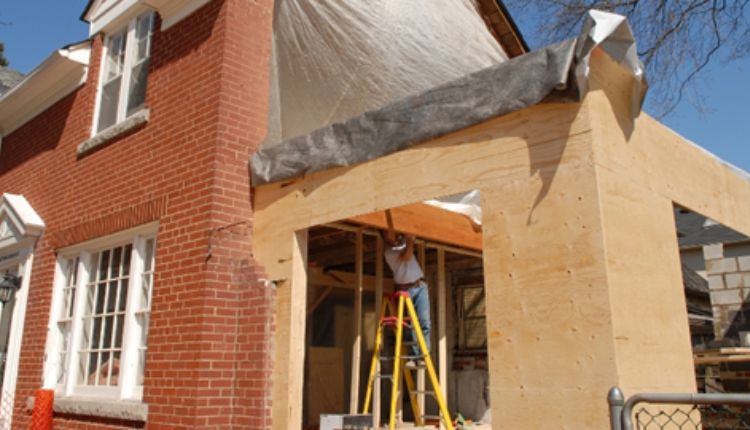Get practical advice for adding space to your San Diego home, covering design, permits, costs, and energy-efficient features.
Expanding your home is a rewarding way to add functional space and increase property value, especially in a bustling city like San Diego where real estate is at a premium. A home addition can create much-needed room for family members, a new workspace, or even a rental opportunity. However, planning a successful addition requires careful thought, from budgeting and design to zoning regulations and energy efficiency. Here’s what to consider to help ensure a smooth, successful project
1. Define Your Goals for the Addition
The first and most critical step is identifying the purpose of your home addition. Having a clear goal shapes the design, layout, and essential features. Many homeowners in San Diego add extra bedrooms for family growth, guest suites for hosting visitors, or home offices to support remote work. Others are interested in creating hobby or recreation rooms to enhance home life, or in constructing an accessory dwelling unit (ADU) for rental income or multi-generational living. Knowing why you’re expanding your space will help you make smarter design choices that serve you now and in the future.
2. Get Familiar with Zoning and Permit Requirements
San Diego’s zoning laws and building regulations are specific and vary based on location. To avoid setbacks, research these rules before beginning your project. Zoning laws will affect the size, height, and placement of your addition. You’ll also need to apply for permits for most additions, which typically require approvals and inspections at various stages. San Diego has additional restrictions in historic districts, so if your home is in one, you’ll want to account for any special rules. Working with a contractor or architect familiar with local building codes will help ensure compliance and avoid delays.
3. Set a Realistic Budget and Prepare for Unexpected Costs
A detailed budget is essential to keep your project on track financially. The cost of a home addition varies widely based on size, materials, and the professionals involved, so it’s best to plan for each expense carefully. Start with estimates for design and planning, as architects and designers charge of creating detailed plans that meet local codes and your vision. Construction labor and materials, which can be costly in San Diego, also need to be accounted for, along with any permit fees.
A contingency fund of around 10-20% of your total budget is recommended to cover unexpected costs. From structural repairs to fluctuating material prices, surprises are common in construction, and having a buffer can prevent these from derailing the project. Consulting multiple local contractors will give you a realistic picture of pricing and help you make informed choices about materials and finishes.
4. Design for Functionality and Cohesion
A successful home addition should integrate smoothly with the original structure, both in style and function. Start by considering how the new space will flow with the existing layout; the addition should feel natural, rather than like an afterthought. Matching your home’s architectural style and color scheme will create a cohesive appearance, and using similar finishes helps the new space blend seamlessly.
With San Diego’s abundant sunshine, many homeowners choose to incorporate large windows, skylights, or glass doors to bring natural light into the new space. If your project allows, consider designs that open up to outdoor areas, like patios or decks, for an indoor-outdoor feel. Working with an experienced designer or architect can help you create a layout that balances functionality with aesthetic harmony.
5. Prioritize Energy Efficiency and Sustainable Materials
Incorporating sustainable, energy-efficient features into your addition can benefit both the environment and your utility bills, making it a smart investment. Quality insulation and energy-efficient windows help keep the space comfortable year-round, reducing heating and cooling costs. Solar panels, well-suited to San Diego’s sunny climate, are another option that can reduce electricity costs over time.
Consider using eco-friendly materials, such as reclaimed wood, bamboo, or low-VOC paints, to minimize environmental impact and promote better indoor air quality. If the addition includes a kitchen or bathroom, energy-saving appliances, and water-conserving fixtures will enhance the sustainability of the new space. Taking a sustainable approach can add long-term value to your home and align with California’s strong environmental standards.
6. Choose a Reliable Room Addition Builder in San Diego
Working with the right room addition builder in San Diego can make or break your project. Look for a builder with proven experience and positive reviews on similar projects, as well as knowledge of San Diego’s codes and climate-specific building practices. Checking credentials and licenses will help you ensure that your contractor is qualified, insured, and equipped to manage the details of the job.
Before making a decision, review the builder’s portfolio to understand their quality of work and style. A good contractor will provide a clear contract, detailed timeline, and budget breakdown, along with transparent communication throughout the process. Asking for client references can give you further confidence that they are dependable and have successfully managed similar projects.
7. Anticipate Construction Disruptions
Construction projects can impact your daily routine, especially if the addition affects key areas like bedrooms or kitchens. Noise from power tools and machinery is unavoidable, so it’s helpful to coordinate with your builder on schedule, especially for the noisiest tasks. Dust and debris will also be a reality during construction, but sealing off areas and using air filters can help manage the mess.
For larger projects, some homeowners find it beneficial to arrange temporary living accommodations, especially if construction will limit access to essential spaces. Having a clear timeline and regular communication with your builder can help you stay prepared for any disruptions and adjust your plans as needed.
8. Consider the Long-Term Value and Resale Appeal
A well-designed addition can increase your home’s resale value, but not all additions provide the same return on investment. When choosing features, consider what will appeal to a broad range of buyers, should you decide to sell in the future. Practical spaces, such as additional bedrooms or a home office, tend to be in demand, as do ADUs, which provide flexible options for future owners.
Using high-quality materials and creating a space that harmonizes with the original home can enhance both durability and appeal. Design elements that feel timeless and versatile are often more attractive than those based on trends. Consulting with a local real estate agent or conducting research on neighborhood preferences can provide insight into what types of additions offer the highest ROI in San Diego.
Conclusion
Planning a home addition in San Diego requires balancing your design vision with practical considerations like budget, zoning, and energy efficiency. By setting clear goals, working with a skilled builder, and prioritizing cohesive design, you can create a space that enhances both your home’s functionality and long-term value. Thoughtful planning and quality craftsmanship will ensure a lasting, seamless addition to your home.






